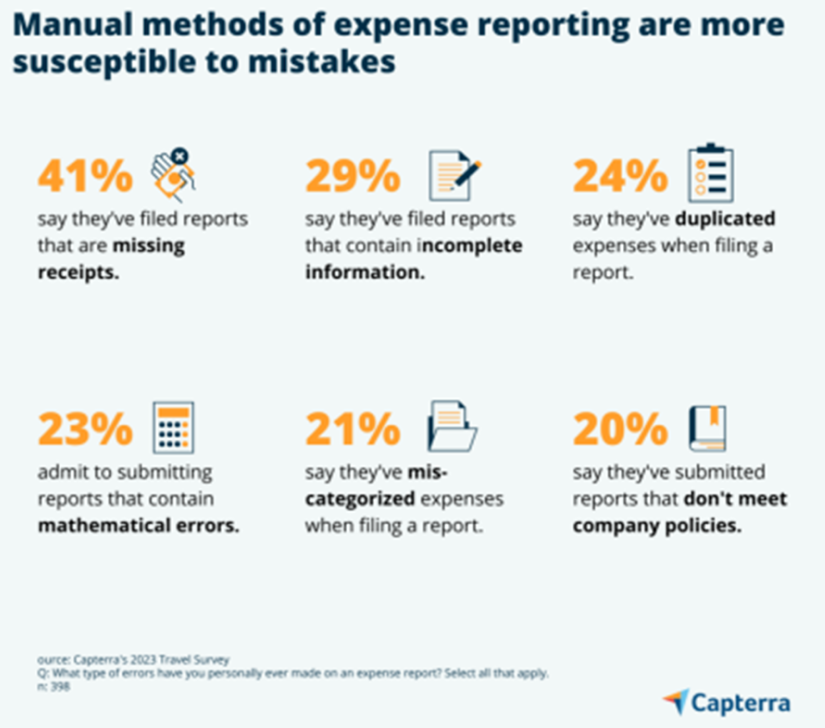Skift Take
Companies looking to reduce the rising costs of business travel would do well to evaluate their reporting systems, to avoid the risks associated with paper-based processes.
The U.S. Travel Association estimates domestic corporate travel won’t fully recover until 2025. But Capterra’s 2023 travel survey shows that 46% of travelers now travel more for work, compared to before the pandemic.
The gains come even as costs are rising: About 65% of respondents confirmed their travel costs have risen within the past year, with a 14% estimated increase compared to 2019. Employees said that, on average and in total over the past year, they estimate that they individually cost their business $5,000 in travel alone.
The main reasons cited for more business travel:
- client meetings (52%)
- networking conferences (52%)
- training (50%)
- trade shows (31%)
Costly Errors and Tedious Time-sinks
Companies need to modernize their processes to handle the associated challenges of more business travel, as employees admit they don’t always understand what’s required of them and make mistakes when submitting manual expense reports.
- Some 85% of companies are cutting back on overall travel spending with tighter budgets, yet only 14% use technology to plan and report expenses.
- 47% said their company used spreadsheets to handle records and report expenses.
- 42% said their company manually tracks receipts.
- 92% found challenges associated with expense reporting, and 90% admitted to making mistakes when handling the process.
- 20% of employees admit to submitting reports that don’t align with company policies, putting businesses – and themselves – in a position to miss out on significant savings via tax deductions.

A common issue for corporate travel managers is ensuring all team members are adequately informed about policy guidelines and benefits, as indicated in a recent State of Business Travel report from the Global Business Travel Association.
Max Lillard, senior finance analyst at Capterra, further stated that “leveraging technology, fostering partnerships, and prioritizing employee well-being can help businesses optimize their travel initiatives.”
Other Key Corporate Travel Trends Included:
- On average, employees take six business trips a year, each lasting about three days.
- 93% take advantage of “blended travel,” adding personal vacation time to corporate trips, and 52% of those who did so said the need for work-life balance drove it.
- 31% of blended travelers visit historical sights, 30% catch up with friends and family, and 25% attend cultural events during their off time.
Get Skift Research
Skift Research products provide deep analysis, data, and expert research on the companies and trends that are shaping the future of travel.
Have a confidential tip for Skift? Get in touch
Tags: business travel, travel tech, Travel Trends
